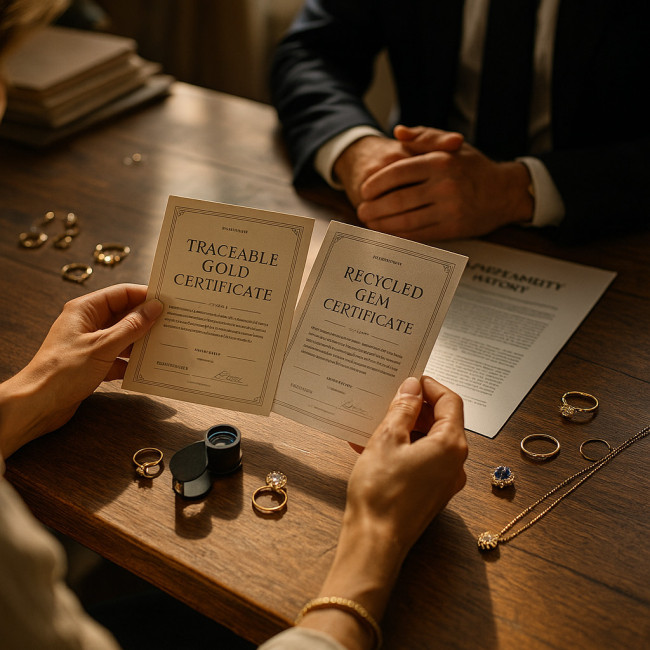Negotiating intellectual property when jewellery designers co-create with brands
Co-creating a jewellery line with a well-known brand can skyrocket your visibility and income, but only if you secure fair intellectual property (IP) terms. This guide walks you through the clauses, negotiation tactics and red flags every independent jewellery designer should master before signing on the dotted line.
Why IP matters more than ever in jewellery collaborations
From 3D CAD files to signature stone settings, your creative assets fuel campaigns, e-commerce pages and print look-books long after launch. Brands know that, which is why they often push for broad licences or outright ownership. Protecting your IP ensures you:
- Earn royalties on future production runs.
- Prevent knock-offs that dilute your aesthetic.
- Retain leverage for future limited-edition royalty models.
Core IP clauses you must understand
1. Ownership vs. licence
If a contract states that the “work made for hire” belongs to the brand, you lose all control. Instead, grant the company a licence to exploit specific assets for a limited time and geography.
2. Scope of use
Spell out every channel—retail, e-commerce, out-of-home advertising, VR try-on apps—and charge extra if new channels emerge later.
3. Term & renewal
Three years is standard for seasonal capsule collections. Anything longer without a renewal fee undervalues your contribution.
4. Royalty structure
Typical jewellery collaboration royalties range between 8 % and 15 % of net sales. Watch for clauses that deduct “marketing costs” before your cut.
5. Audit rights
Without the right to audit, you rely solely on the brand's sales reports. Add language that allows a third-party accountant to verify figures annually.
Negotiation framework: six steps that work
- Map your assets. List sketches, CAD files, and production techniques. Flag anything reusable in future projects.
- Benchmark compensation. Compare proposals against industry averages and wholesale margin case studies.
- Prioritise deal-breakers. Decide what you will never concede—often global ownership or perpetual usage.
- Propose alternatives. Offer restricted licences or escalating royalty tiers instead of surrendering ownership.
- Bring data. Show previous sales, social reach or press to justify stronger terms.
- Loop in experts. An IP lawyer costs less than losing your signature design forever.
Comparison table: collaboration models at a glance
| Model | Typical IP Status | Royalty Range | Best For |
|---|---|---|---|
| White-label manufacturing | Brand owns design | 3 – 6 % | Volume-driven income |
| Capsule collection | Designer retains IP, brand holds licence | 8 – 15 % | Seasonal buzz |
| Co-branding partnership | Joint ownership | 10 – 18 % | Long-term visibility |
| Revenue-share model | Designer owns IP | 20 – 30 % | Direct-to-consumer hybrids |
| Full acquisition | Brand owns all rights | One-off lump sum | Exit strategy |
Visual snapshot: royalty potential by collaboration model
Digital assets: don't overlook hidden IP
3D renders, unboxing animations and high-resolution stills often live in cloud drives. Protect them with a digital asset vault that logs access and versions. The licence should define:
- File types and resolutions delivered.
- Permitted edits (colour correction, cropping).
- Mandatory credit lines in product pages.
Environmental credentials: an IP angle you might miss

If you invest in traceable gold or recycled gems, the documentation is part of your IP portfolio. Reference independent certifications such as RJC or Chain-of-Custody, and link usage to marketing approvals. Brands eager to leverage eco-certified metal claims should pay an additional fee for that value.
Common pitfalls and how to dodge them
- Silence on derivatives. Without a clause, the brand may create spin-offs without paying you.
- Undefined sell-off period. End-of-season inventory can linger online for years; ensure royalties extend accordingly.
- Social-media grey zones. User-generated content often escapes contract language; specify repost rights.
Real-world workflow—from first call to signed contract
- Brand inquiry arrives via craft-designer collaboration board.
- Designer issues a one-page terms sheet summarising desired IP stance.
- Both sides iterate in a shared document, tagging lawyers for comments.
- Prototype phase begins only after a signed NDA and provisional licence.
- Final agreement executed with e-signature; royalty reporting starts 30 days post-launch.
Quiz: Test your IP negotiation readiness
FAQ
- Do I need to register my designs before negotiations?
- While not mandatory, registering designs or filing a design patent strengthens your bargaining position and speeds up legal action if infringements occur.
- Can I reuse elements from a collaboration in future collections?
- Only if the contract preserves your right to create “substantially similar” designs. Exclude colour-way or material swaps from exclusivity clauses.
- What happens if the brand is acquired?
- Add a “change of control” clause forcing the new owner to honour existing IP terms or renegotiate with you.
- How often should I receive royalty statements?
- Quarterly is standard. Monthly statements are preferable for high-volume e-commerce collaborations.
Take action now
Review your current contracts, highlight any missing IP clauses and schedule a consultation with an IP lawyer this week. Your creative future—and revenue—depend on it.











